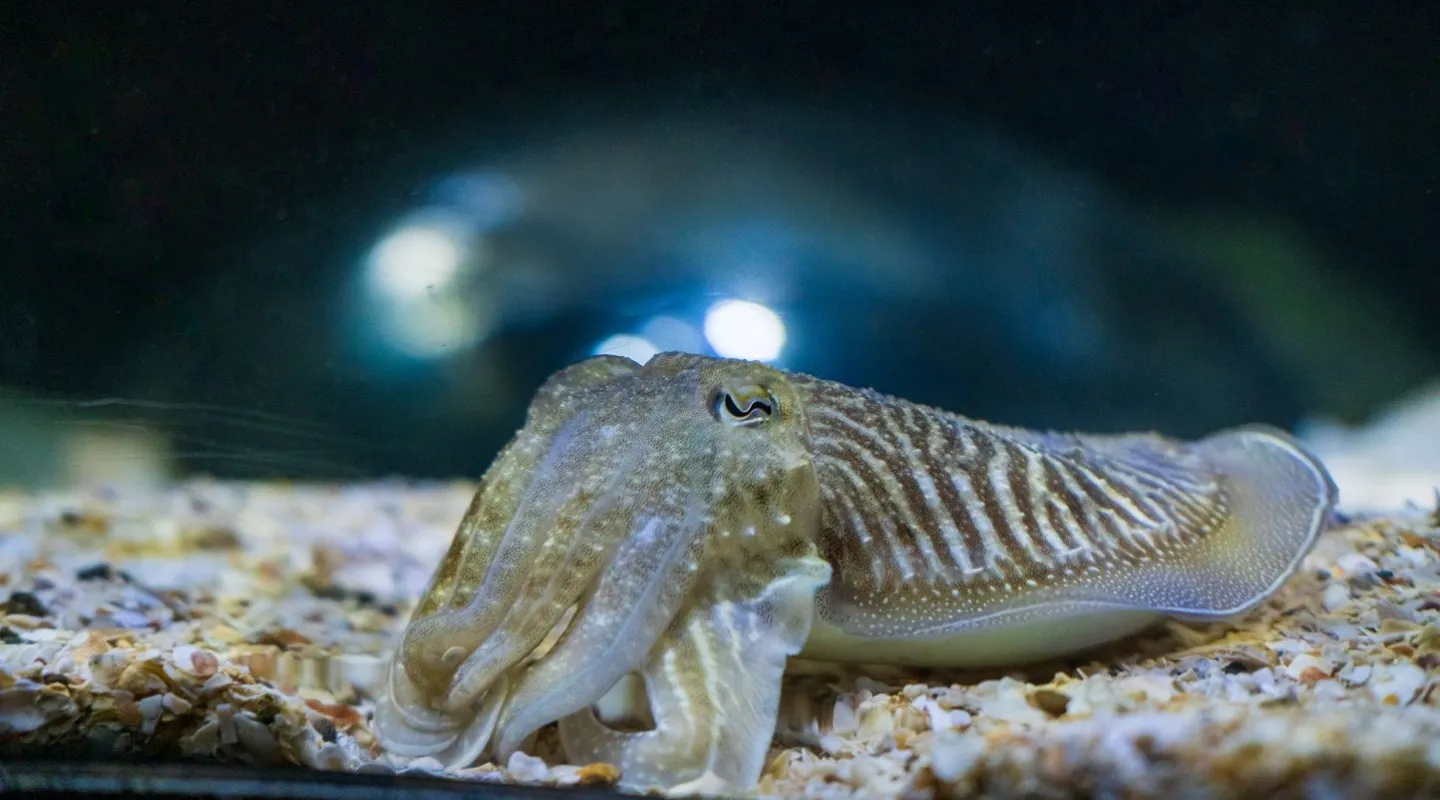And they already have a full palette of colours.
Cuttlefish are usually found in isolation. They gather in shallow waters, close to the shore, during courtship, where several males can be seen courting the same female, or waiting their turn.

Molluscs

Identity card
Not Evaluated
East Atlantic, from the mouth of the Baltic and south of Norway to the north-west coast of Africa.
From the surface down to a depth of 200 m, on loose sand or gravel substrates.
Between 15 and 30 cm. Maximum size: 45 cm, not including tentacles.
Fish, molluscs and crustaceans.

The black pointed eggs form clusters. As soon as they hatch, cuttlefish are able to capture prey .
And they already have a full palette of colours.
Cuttlefish are usually found in isolation. They gather in shallow waters, close to the shore, during courtship, where several males can be seen courting the same female, or waiting their turn.
If the feeding and temperature conditions are the most favourable, cuttlefish can reach sexual maturity when they are one year old. Adults die after the breeding season.
It can be found from the surface down to a depth of about 200 m, living on soft sandy or gravel seabeds, in grass beds or among large algae. It often buries itself partially in the sediment.
The Ocean Mag
In the spotlight
Poissons, crevettes, requins, les animaux qui se reproduisent ou sont élevés à Nausicaá rejoignent les espaces d'exposition.

Article
Which came first, the egg or the fish? A brief overview of eggs and reproductive strategies in marine animals.
Article
Coral, the planet's largest builder, is a fragile and threatened animal.